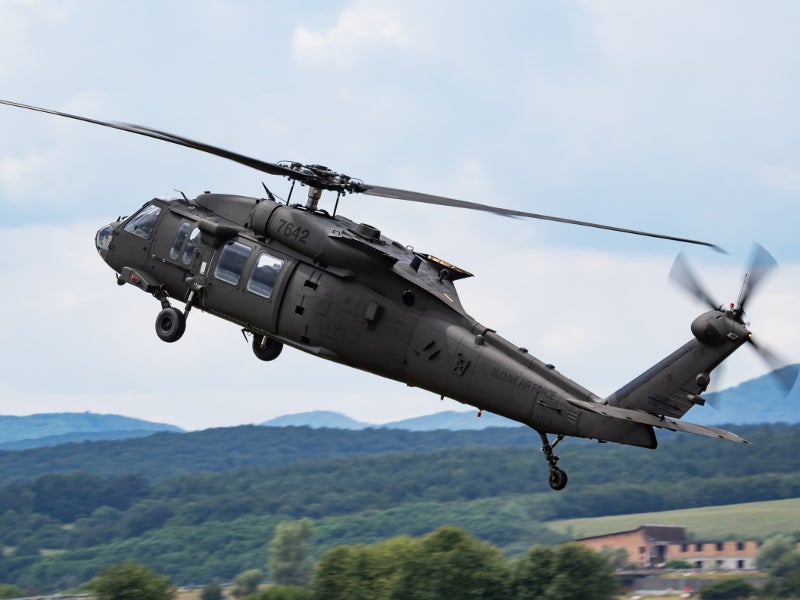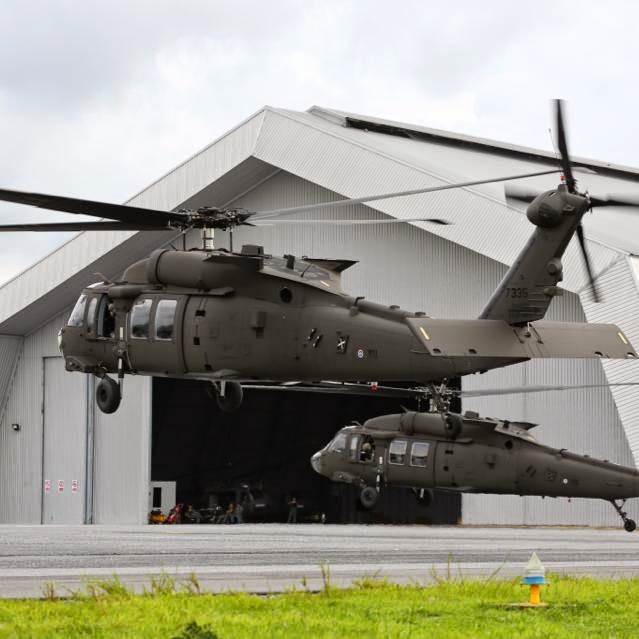UH 60 Helicopter Maintenance: A Comprehensive Overview for Pilots
UH 60 Helicopter Maintenance: A Comprehensive Overview for Pilots
Blog Article
Understanding the Mechanics and Design Behind Uh 60 Helicopters
The UH-60 helicopter, generally recognized as the Black Hawk, stands as a pinnacle of contemporary rotorcraft modern technology, symbolizing a mix of durable design and complex technicians. From its inception to its current models, the development of this airplane showcases a fusion of advancement and functionality. As we peel off back the layers of the UH-60's style, a world of elaborate systems and thorough engineering emerges. Recognizing the mechanics and design behind this flexible airplane unveils a world where precision satisfies power, and where each part plays a critical function in attaining trip.
History of UH-60 Helicopters
The background of UH-60 helicopters traces back to the late 1970s when the United States Army looked for a flexible and advanced utility helicopter to change its aging fleet. In reaction to this need, the Sikorsky Airplane Corporation created the UH-60 Black Hawk helicopter. Introduced in 1979, the UH-60 promptly ended up being a staple in military procedures because of its excellent abilities.
The UH-60 was designed to master a selection of objectives, including troop transport, clinical evacuation, digital warfare, and unique procedures. Its ability to adjust to different duties made it a beneficial possession to the united state Army and various other military forces all over the world
For many years, the UH-60 platform has undergone a number of upgrades and variations to enhance its performance and maintain rate with advancing mission requirements. These helicopters have seen comprehensive solution in problems such as the Gulf Battle, Afghanistan, and Iraq, showcasing their integrity and versatility in diverse operational atmospheres. The UH-60's abundant background is a testament to its enduring heritage as a top utility helicopter.

Engine and Power Equipments
Using sophisticated propulsion innovation, UH-60 helicopters are equipped with advanced engine and power systems to make certain optimum performance and integrity in a range of functional scenarios. The UH-60, typically called the Black Hawk, is powered by two General Electric T700-GE-701D engines, each qualified of delivering up to 1,940 shaft horse power. These turboshaft engines offer the needed drive for the helicopter to accomplish its goals efficiently, including army transportation, medical emptying, and fight support.

Blades System and Aerodynamics
How do the blades system and the rules of aerodynamics of UH-60 helicopters add to their functional effectiveness and flight abilities? click here to read The blades system of the UH-60 helicopter plays a vital function in offering lift and propulsion. The UH-60 includes a four-bladed, totally verbalized blades system that permits for high maneuverability and security during trip. This style enables the helicopter to perform a wide array of goals, from transport and clinical evacuation to battle procedures.
The rules of aerodynamics likewise play a key duty in the efficiency of UH-60 helicopters. The streamlined fuselage and rotor blade design decrease drag, allowing the helicopter to achieve higher speeds and much better gas performance. The wind resistant style of the UH-60 additionally adds to its capability to operate in diverse environmental problems, including high elevations and hot temperatures.
Avionics and Trip Control Solution

In its intricate coordination with the rotor system and aerodynamics of UH-60 helicopters, the avionics and flight control systems create a vital network of technologies forming the airplane's functional capabilities. In the UH-60, these systems consist of electronic screens, communication radios, GPS navigating, climate radar, and autopilot systems.
The look at this site flight control systems of the UH-60 are accountable for translating the pilot's inputs into the suitable modifications to the rotor system, ensuring stable flight and ability to move. These systems contain hydraulic actuators, servos, and computers that work with each other to control the tail and main rotors, as well as various other trip control surface areas. By precisely handling the helicopter's trip characteristics, these systems allow pilots to carry out a variety of goals, from transportation and search-and-rescue to battle operations, with accuracy and self-confidence.
Function and Applications in Aeronautics
Avionics systems in UH-60 helicopters include an array of digital systems that aid in navigating, interaction, tracking, and controlling various airplane functions. These systems include electronic displays, auto-pilot systems, communication radios, General practitioner navigation equipment, and climate radar. In addition, these systems integrate safety and security features such as auto-pilot modes, terrain awareness advising systems, and stability enhancement systems to enhance the overall safety and functional capacities of the UH-60 helicopters in different objectives, consisting of army transport, medical emptying, search and rescue, and aerial firefighting.
Conclusion
Finally, the UH-60 helicopter is a versatile airplane with a rich background and progressed design. Its engine and power systems, rotor system, the rules of aerodynamics, avionics, and flight control systems all function together to make original site it a effective and reliable machine. The UH-60's duty and applications in aeronautics are large, ranging from armed forces operations to search and save missions. Its proceeded advancement and usage show its significance in the area of aviation (uh 60).
In its intricate control with the blades system and aerodynamics of UH-60 helicopters, the avionics and trip control systems form a vital network of innovations shaping the aircraft's operational capabilities.The trip control systems of the UH-60 are responsible for converting the pilot's inputs into the appropriate changes to the rotor system, ensuring steady trip and ability to move. Avionics systems in UH-60 helicopters include a variety of electronic systems that aid in navigating, interaction, surveillance, and regulating various airplane features. In addition, these systems incorporate safety and security attributes such as autopilot settings, surface recognition warning systems, and security enhancement systems to enhance the general safety and security and operational abilities of the UH-60 helicopters in various objectives, consisting of troop transportation, clinical emptying, search and rescue, and airborne firefighting.
Its engine and power systems, rotor system, aerodynamics, avionics, and trip control systems all function with each other to make it a trusted and effective device.
Report this page